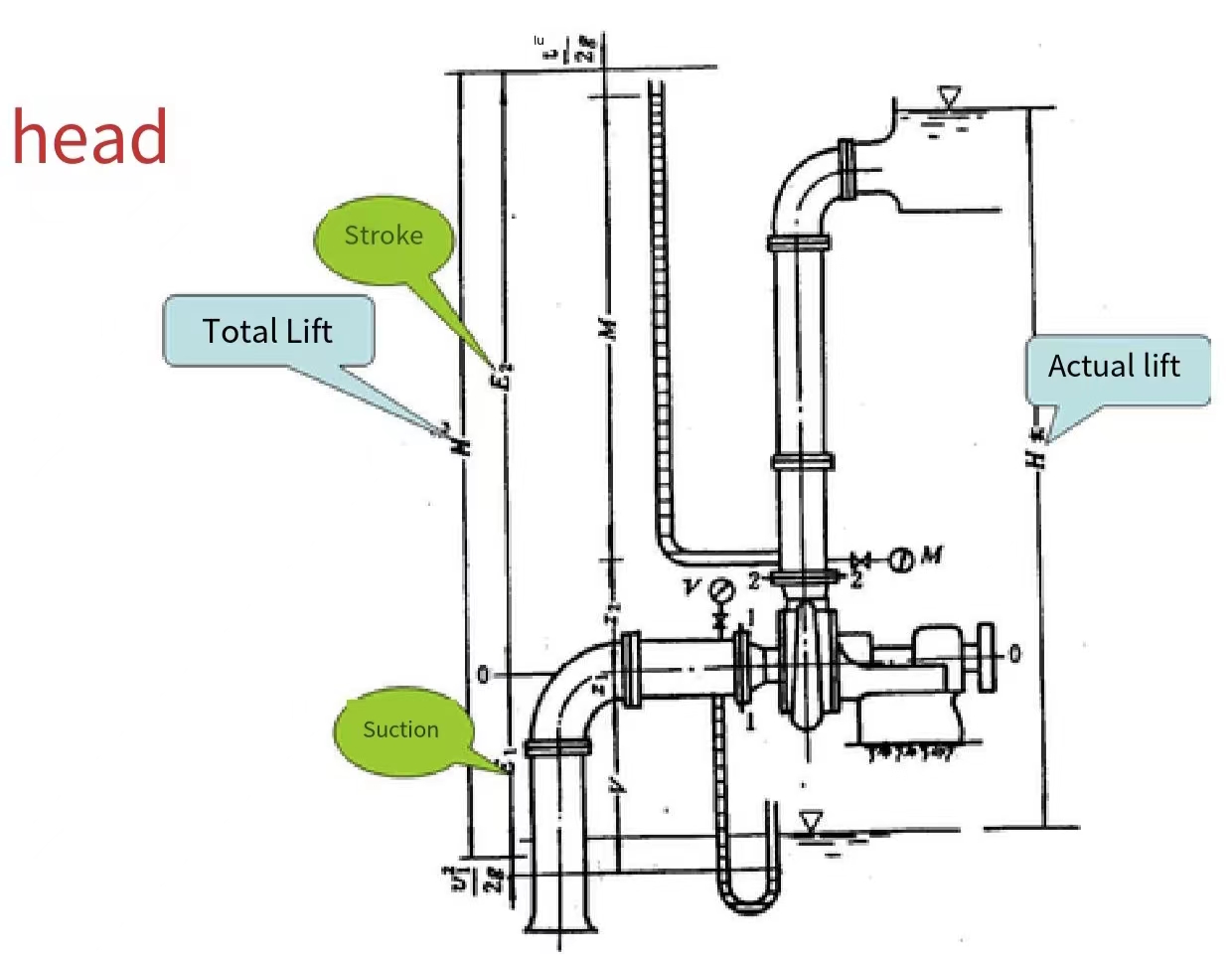Water pump knowledge-pump head
The head of a water pump is one of the important indicators of water pump performance. It indicates the height to which the water pump can lift water or liquid. Specifically, the head refers to the energy that the water pump can add to pump a unit weight of water from the water source to the outlet in a unit time, usually measured in meters (m).
In practical applications, the calculation of the head needs to consider multiple factors, including the power, speed, impeller design, etc. of the water pump. The higher the head, the stronger the ability of the water pump to lift water or liquid, but the corresponding power required by the water pump will also increase.

The head of a water pump can be divided into two types: actual head and total head. The actual head refers to the height to which the water pump can lift water or liquid under actual working conditions. It is affected by many factors such as pipeline resistance, water source water level, and outlet pressure. The total head is the maximum height to which the water pump can theoretically lift water or liquid, which is usually determined when the water pump is designed and selected.
When selecting a water pump, it is necessary to determine the required head based on actual needs and working conditions. If the head is not selected properly, it may lead to problems such as low pump efficiency, increased energy consumption, and even damage to the water pump. Therefore, the correct selection of the pump head is of great significance to ensure the normal operation of the pump and extend its service life.
In short, the pump head is one of the important indicators for evaluating the performance of the pump, which indicates the ability of the pump to lift water or liquid. When selecting a pump, it is necessary to determine the required head based on actual needs and working conditions to ensure the normal operation and efficient use of the pump.




